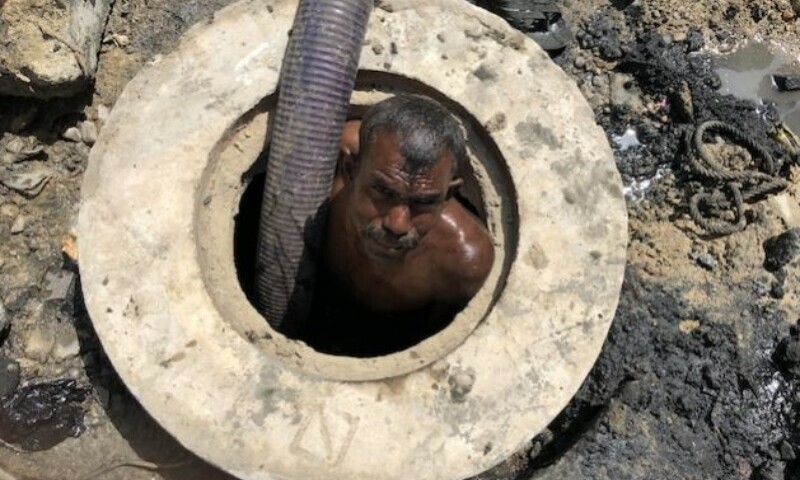84 sewage workers have died in 19 districts of Pakistan over the past five years, according to advocacy group.
It is not the army of cockroaches and the stink that greets you when you open the manhole lid to get in, or the rats swimming in filthy water, but the blades and used syringes floating that are a cause for concern for many as they go down to bring up the rocks and the buckets of filthy silt.
More than the physical hazards, it is the invisible danger stalking these men, in the form of gases like methane, carbon monoxide, sulfur dioxide and nitrous oxide — produced when wastewater contains chlorine bleaches, industrial solvents and gasoline — when mixed with concrete in drainpipes — that have taken the lives of these cleaners.
According to Sweepers Are Superheroes, an advocacy campaign group, around 84 sewage workers have died in 19 districts of Pakistan over the past five years. In neighboring India, one sewer worker dies every five days, according to a 2018 report by the National Commission for Safai Karamcharis.



Can Pakistan get a shit drone for this?